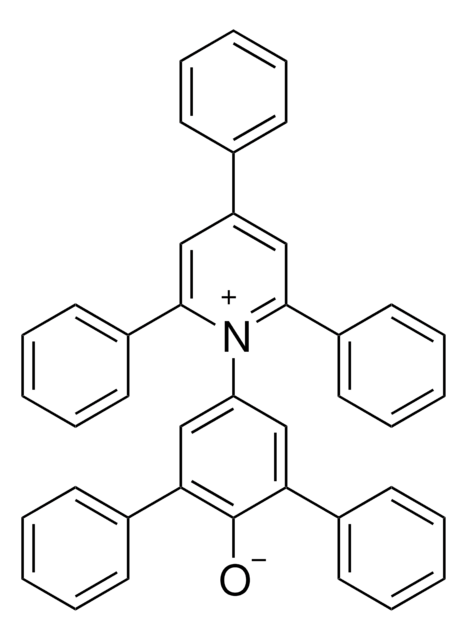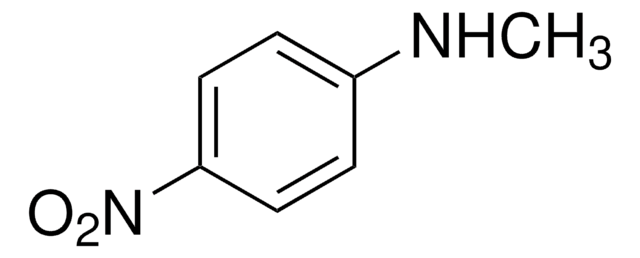D172405
N,N-Dimethyl-4-nitrosoaniline
97%, powder or chunks
Sinónimos:
4-Nitroso-N,N-dimethylaniline
Seleccione un Tamaño
Seleccione un Tamaño
About This Item
Productos recomendados
Nombre del producto
N,N-Dimethyl-4-nitrosoaniline, ≥97%
Nivel de calidad
Ensayo
≥97%
Formulario
powder or chunks
mp
85-87 °C (lit.)
solubilidad
ethanol: 5% (green to very dark green)
aplicaciones
diagnostic assay manufacturing
hematology
histology
temp. de almacenamiento
room temp
cadena SMILES
CN(C)c1ccc(cc1)N=O
InChI
1S/C8H10N2O/c1-10(2)8-5-3-7(9-11)4-6-8/h3-6H,1-2H3
Clave InChI
CMEWLCATCRTSGF-UHFFFAOYSA-N
¿Está buscando productos similares? Visita Guía de comparación de productos
Categorías relacionadas
Aplicación
Acciones bioquímicas o fisiológicas
Palabra de señalización
Danger
Frases de peligro
Consejos de prudencia
Clasificaciones de peligro
Acute Tox. 3 Oral - Eye Irrit. 2 - Self-heat. 1 - Skin Irrit. 2 - Skin Sens. 1 - STOT SE 3
Órganos de actuación
Respiratory system
Código de clase de almacenamiento
4.2 - Pyrophoric and self-heating hazardous materials
Clase de riesgo para el agua (WGK)
WGK 3
Punto de inflamabilidad (°F)
Not applicable
Punto de inflamabilidad (°C)
Not applicable
Equipo de protección personal
Eyeshields, Faceshields, Gloves, type P3 (EN 143) respirator cartridges
Elija entre una de las versiones más recientes:
¿Ya tiene este producto?
Encuentre la documentación para los productos que ha comprado recientemente en la Biblioteca de documentos.
Los clientes también vieron
Active Filters
Nuestro equipo de científicos tiene experiencia en todas las áreas de investigación: Ciencias de la vida, Ciencia de los materiales, Síntesis química, Cromatografía, Analítica y muchas otras.
Póngase en contacto con el Servicio técnico













